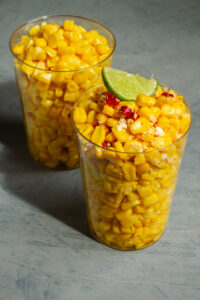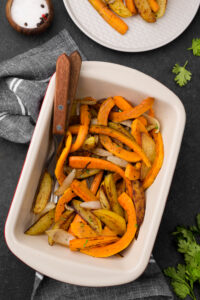Introduction
Angel food cake recipe: There’s something truly special about a wellmade angel food cake. This classic dessert stands out with its delicate, ethereal texture that seems to defy the laws of baking. Light, airy, and fluffy, an angel food cake is like a sweet, cloudlike dream on your palate.
Mastering the angel food cake recipe is not just about baking a cake; it’s about perfecting a culinary art that has been cherished for generations. The allure of this cake lies in its simplicity and elegance—its lightness comes from the careful folding of whipped egg whites into a sweet, airy batter. This technique results in a dessert that’s not only visually stunning but also delightfully satisfying without being overly heavy.
Perfecting the angel food cake recipe might seem daunting, but once you understand the key techniques and ingredients, it becomes a rewarding process. Whether you’re baking for a special occasion or simply to enjoy a sweet treat, mastering this recipe adds a touch of finesse to your baking repertoire and ensures that every bite is as heavenly as intended.
1. Ingredients and Equipment
To create a flawless angel food cake, choosing the right ingredients and equipment is crucial. Let’s break down what you’ll need to achieve the light and airy texture that defines this dessert.
Key Ingredients:
Egg Whites: The foundation of an angel food cake is the egg whites. They must be fresh and at room temperature to whip up to the right consistency. Fresh egg whites produce a better volume and texture, which are essential for the cake’s delicate structure.
Sugar: To stabilise the egg whites and sweeten the cake, granulated sugar is added. It’s important to add sugar gradually while whipping the egg whites to ensure they reach the stiff peak stage without becoming grainy.
Flour: The ideal flour for an angel food cake is cake flour. It’s finely milled and low in protein, which contributes to the cake’s soft texture. Sifting the flour is essential because it helps to disperse the flour and sugar throughout the batter uniformly and gets rid of any lumps.
Salt: A small teaspoon of salt brings out the flavours and counteracts the cake’s sweetness.
Equipment:
Stand Mixer: A stand mixer is invaluable for whipping the egg whites to the perfect consistency. It provides the power needed to achieve stiff peaks without overworking the mixture. If you don’t have a stand mixer, a hand mixer can work too, though it requires more effort.
Tube Pan: The tube pan, with its central tube, allows the cake to rise evenly and provides support during baking. It’s essential for maintaining the structure of the angel food cake, as its shape helps the cake to bake uniformly and cool properly.
Spatula: A spatula is your best friend for gently folding the flour and sugar into the whipped egg whites. This step is delicate, and using a spatula ensures that you maintain the light texture of the batter without deflating it.
2. Preparing the Ingredients
The success of your angel food cake recipe hinges on how well you prepare your ingredients. Each step in this process is crucial for achieving that light, airy texture. Here’s how to get it right:
Egg Whites:
Separation: Start by ensuring that no yolk gets mixed with your egg whites. Even a tiny bit of yolk can prevent the whites from whipping properly. For best results, separate the eggs while they are cold, then let the whites come to room temperature. Roomtemperature egg whites whip better and achieve more volume.
Whipping to Peaks: When whipping egg whites, you want to achieve stiff peaks. This means the egg whites should form peaks that stand upright but aren’t dry or clumpy. Start at a low speed and gradually increase to high. Avoid overwhipping, which can cause the whites to break down and lose their structure.
Sifting:
Flour and Sugar: Sifting is an essential step in the angel food cake recipe. Sifting the flour and sugar not only removes lumps but also aerates these dry ingredients. This helps in creating a lighter, more even batter. When combined with the whipped egg whites, sifted ingredients blend more smoothly, enhancing the cake’s airy texture.
Other Tips:
Room Temperature Ingredients: Besides the egg whites, ensure that other ingredients like the flour and sugar are at room temperature. This helps in achieving a more uniform batter and promotes even mixing.
Avoiding Fat and Yolk: Any traces of fat or yolk in the egg whites can interfere with the whipping process. Make sure your mixing bowls and utensils are completely clean and dry. Make sure the yolk doesn’t seep in by separating the egg whites in a different bowl.
3. Mixing and Folding Techniques
The mixing and folding stages of your angel food cake recipe are where precision and technique come into play. These steps are crucial for achieving the light, fluffy texture that defines this classic cake. Here’s how to master them:
Whipping Egg Whites:
Steps for Success: Start by putting your egg whites at room temperature into a dry, clean mixing basin.Beat the egg whites continuously until stiff peaks form. Gradually increase the speed to mediumhigh, adding sugar in small increments. Beat the egg whites continuously until stiff peaks form. You should see peaks that stand straight up when the beaters are lifted, but they should still have a glossy appearance.
Avoid OverWhipping: Be cautious not to overwhip the egg whites. Overwhipped egg whites can turn dry and grainy, making them difficult to incorporate into the batter. If you notice the whites beginning to separate or become too stiff, stop immediately.
Incorporating Ingredients:
Folding Technique: When it comes to folding the flour and sugar into the whipped egg whites, gentleness is key. Use a large spatula and employ a folding motion to combine the ingredients. To begin, whisk the egg whites with a tiny amount of the sifted flour and sugar mixture. Fold it in using a gentle motion, cutting through the middle of the mixture and lifting from the bottom. Rotate the bowl as you fold to ensure even distribution.
Maintaining Airiness: The goal is to maintain the volume and lightness of the egg whites while incorporating the dry ingredients. Avoid vigorous stirring or beating, as this can deflate the egg whites and compromise the cake’s fluffy texture. Be patient and continue folding until the mixture is uniform and smooth, but still airy.
4. Baking the Cake
Baking the cake is where your angel food cake recipe comes to life, transforming the batter into a beautifully fluffy dessert. Proper preparation and attention to baking details are crucial for achieving the ideal texture and structure. Here’s how to get it right:
Preparing the Pan:
Tube Pan: The tube pan, with its central tube, plays a vital role in the baking process. It helps the cake rise evenly and provides the necessary support for the delicate structure. Before pouring in your batter, ensure the pan is clean and ungreased. Unlike many other cakes, an angel food cake requires an ungreased pan to help the batter cling to the sides and rise properly. The central tube allows the heat to circulate, ensuring even baking.
Baking Tips:
Oven Temperature: The best temperature for baking angel food cake is 350°F (175°C). Preheat your oven to this setting. This temperature ensures that the cake rises steadily without browning too quickly.Avoid opening the oven door while baking because the cake’s rising time may be impacted by abrupt temperature changes.
Baking Time: Bake the cake for approximately 35 to 40 minutes, or until it’s golden brown and the top springs back when lightly touched. Additionally, the cake ought to start to come away from the pan’s sides. If you’re unsure, use a toothpick inserted into the center; it should come out clean if the cake is fully baked.
5. Cooling and Unmolding
The final steps of cooling and unmolding are crucial to ensure your angel food cake recipe results in a dessert that’s as light and fluffy as intended. Here’s how to handle these steps with care:
Cooling Process:
Cooling the Cake: Once your cake is out of the oven, it’s important to cool it upside down to maintain its airy texture. Place the tube pan on a cooling rack or over the neck of a bottle. This allows the cake to cool evenly and prevents it from collapsing. Let the cake cool completely in this position, usually for about an hour. Cooling it upside down helps the cake set properly and ensures it retains its structure.
Unmolding:
Removing the Cake: After the cake has cooled completely, it’s time to remove it from the pan. To release the centre tube and the edges of the cake, start by circling them with a tiny knife or spatula. Carefully remove the cake from the pan, being careful not to shatter or tear it. Push the cake gently out from the base of the pan if it has a removable bottom.
Carefully Handling: Use a knife to carefully release the cake from the pan if it is sticking, being careful not to harm the fragile cake with metal equipment. The key is to be gentle to preserve the light and fluffy texture achieved from your angel food cake recipe.
6. Troubleshooting Common Issues
Even with the best angel food cake recipe, things might not always go as planned. Here’s how to address some common issues to ensure your cake turns out just right:
Dense Cake:
Possible Causes: A dense angel food cake can result from a few issues, such as underwhipped egg whites or improper folding of ingredients. If the egg whites don’t reach stiff peaks, they won’t provide the structure needed for a light cake. Additionally, overmixing the batter after folding can deflate the whipped egg whites.
To fix the recipe, beat the egg whites until stiff peaks form, then fold in the dry ingredients slowly, being careful not to overwork the mixture. Also, be sure to sift the flour and sugar to avoid clumps that can weigh down the cake.
Uneven Rising:
Possible Causes: Uneven rising can occur if the oven temperature is too high or too low, or if the batter is not evenly distributed in the pan. This can lead to a cake that rises unevenly or forms peaks and valleys.
Tips for an Even Rise: Preheat your oven properly and avoid opening the door during baking.Level the batter in the pan and give it a quick tap on the counter to burst any large air bubbles before baking.
Cracked or Sunken Cake:
Possible Causes: Cracks on the surface of the cake can result from an overly high oven temperature or baking the cake too long. A sunken center might indicate that the cake wasn’t baked long enough or that it was disturbed while cooling.
Remedies: Bake the cake at the recommended temperature and avoid opening the oven door frequently. Make sure the cake is fully baked by performing a toothpick test. If you notice cracks or sinking, adjust your baking time or temperature in future attempts to achieve a more consistent result.
7. Serving and Variations
Once you’ve perfected your angel food cake recipe, it’s time to think about how to serve it and make it your own.To improve your cake, try these flavour combinations and serving ideas:
Serving Suggestions:
Classic Presentation: You can serve your angel food cake plain or dusted with powdered sugar. This straightforward method brings out the cake’s airy, delicate texture.
Fruit and Whipped Cream: Place some fresh berries or fruit compote on top of the cake along with a dollop of whipped cream. Berries such as strawberries, raspberries, or a combination of inseason fruits offer a pop of flavour and a hint of sophistication.
Sauces and Syrups: Drizzle with a light citrus glaze or a berry sauce for an added layer of sweetness. A lemon or raspberry sauce complements the cake’s delicate flavor without overpowering it.
Flavor Variations:
Citrus Twist: Add a hint of citrus to your angel food cake recipe by incorporating lemon or orange zest into the batter. This adds a refreshing burst of flavor that pairs beautifully with fruit toppings.
Vanilla Extract: Enhance the cake’s flavor with a splash of vanilla extract. This subtle addition brings out a warm, comforting note that complements a variety of toppings.
Herbal Infusions: Experiment with infusions like lavender or mint for a unique twist. Add a small amount of dried lavender or finely chopped mint leaves to the batter for an aromatic touch.
Conclusion
Mastering the angel food cake recipe involves more than just following a set of instructions; it’s about perfecting the details that make this cake a standout. By focusing on the right ingredients, proper techniques, and careful baking, you ensure a result that’s light, airy, and utterly delightful.
To recap, achieving the perfect angel food cake means:
Using fresh egg whites and a properly prepped tube pan.
Gently mix in sugar and sifted flour after beating egg whites to stiff peaks.
Baking at the correct temperature and cooling the cake upside down to preserve its texture.
Addressing any common issues with troubleshooting tips to achieve the best results.



